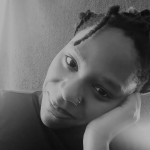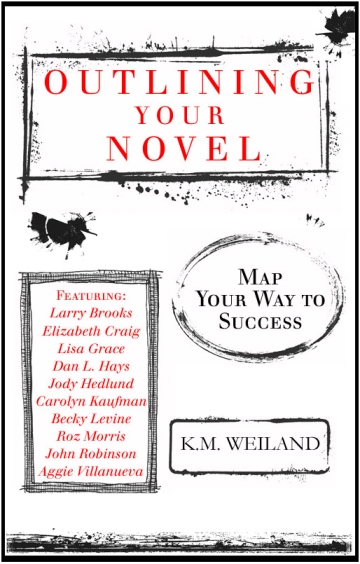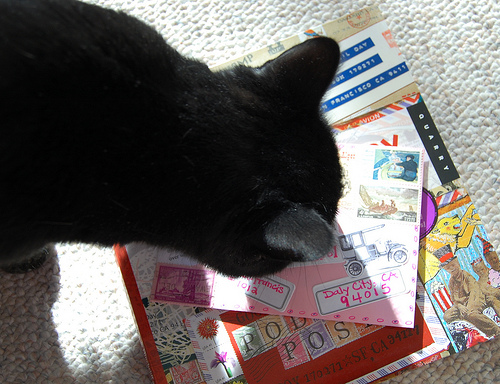Why You Need A Book Bible and How to Start One
Today’s guest post is by Natasha D. Lane.
Writing is often seen as a sudden burst of creativity. The muses appear on our shoulders, whispering inspiration in our ears. Our artistic souls are charged and our fingers move across the keyboard with an urgent ease.
Though the poetic image of a carefree writer typing out masterpieces may be appealing, it’s not realistic. If you’ve been writing for a while, you’ll know the scene I described above is not how writing works. Writing, like many arts, is a process that requires patience, discipline, and organization which is where a book bible comes in handy.
What Is A Book Bible?
A book bible is a document that contains all significant information related to a book or a book series. There aren’t any hard and fast rules to building your bible. However, it should be written in a way that finding specific information is easy. If a reader were to get their hands on your bible and read through it, they should understand how your entire book/series plays out.
Why Do You Need One?
Isn’t sanity a good enough reason? If not, think quality. A book is a product. To grow a following and keep said following happy, you have to give them a good quality product meaning …
Consistency: The world, law, and characters should remain consistent throughout your work. Of course, there are exceptions to this “rule.” The same characters aren’t going to appear at the end of the novel if they’re dead. Perhaps there’s a spell and the story is now taking place in an alternate universe. In that case, consistency is going to be lacking for good reason.
The “bad” consistency is when Axel is six-foot tall with blue eyes and orange hair on page ten. Then, you flip to page two-hundred and Axel’s a brunette with brown eyes.
An even better example is the laws of magic. Say in your universe, witches cannot cast spells without a wand. Great! That means when they’re cornered with no wand, they can’t blast the villain with a spell.
Reference: Being an author is similar to being a parent. We love our stories, the worlds we create, and the characters we develop, even the not-so-nice ones. Still, after writing “x” plus novels, concepts and characters can blend together. Was that war with the Squid-Fanged aliens in my Planeteer: Travels Into the Unknown series or my Journey Into Dark Space novel?
Instead of searching through your entire novel, open that book bible and look through the outline. It’ll be much easier, faster, and more informative than searching your novel for “squid-fanged.”
How Do You Start One?
Now we know why book bibles are the best, we need to know how to create them. While writing my recent release The Woman In the Tree: The True Story of Camelot, I broke my bible down into three parts: (1) The Outline, (2) The Characters, and (3) Geography & Rules.
Outline
If you’re a pantser, you’re already shaking your head. As a former pantser, I understand your disdain for outlining. That said, I don’t think a book bible needs an outline but it should have a summary of how your story will unfold. Even if the entire plot is not worked out, something is better than nothing. You can always fill in the gaps later.
In my case, the story came through clearly, so I typed a list of the chronological events using roman numerals. These were the large events which provided an overall summary of the story. Under them, I placed the smaller occurrences which would lead to the next roman numeral. Here’s an example:
- Richard Is Crowned King
- Richard’s family hosts a coronation party
- Richard’s father notices some of the guests are acting strange
- Henry asks to speak with Richard alone
- Henry Stabs Richard & Betrays Him
- Henry places Richard in prison
- Richard begs for guards to set him free
- Loyalist guards release him
- Richard Flees to the Northern Kingdom
(New: Richard Flees to the South & Hides in a Village)
Cross out the events as you move through the outline. If you decide an event no longer works with your plot, either delete it or place the new event in italics under the original. See above.
Characters
The best way to keep track of your characters is to list them out. Additionally, you should include a description and general background on each character. Taking this step isn’t necessary for every character. The baker that sold your character a loaf of bread in chapter five isn’t relevant enough to make the list. Unless you plan for the baker to play a critical role in plot development, he can stay in the bakery.
A final note on character lists: Some authors go into great detail. They include descriptions, background, sequel hints, and first appearance. Other writers stay general like I described above. How detailed you want to be is up to you.
Geography & Rules
Geography may not be significant to every story. If there isn’t much traveling or world-building, the details here will be few. However, even where traveling is limited, an author should understand the environment their characters will live.
Does your story take place in Utah? Have you ever been to Utah? If no, you should start learning in advance. Do some reading on the Utah landscape, the big industries there, is it more rural or urban, and etc. Noting this information in advance makes writing easier and results in a more grounded narrative.
Last, Rules. Magical abilities, restrictions, and contrasts need to maintain throughout the novel. Social laws and expectations need to be maintained. Think of books like 1984 or Fahrenheit 451. Both deal with censorship. Imagine if that censorship lagged in certain chapters or if government laws changed every few chapters.
In short, book bibles are great reference guides. They make writing easier which makes editing easier and leads to better end-product. So, what are you waiting for?
Put fingers to keyboard and start your bible.
 Natasha D. Lane is the author of The Pariah Child & the Ever-Giving Stone and The Woman In the Tree: The True Story of Camelot. You can connect with Natasha at her website, and on Facebook, Twitter, and Instagram.
Natasha D. Lane is the author of The Pariah Child & the Ever-Giving Stone and The Woman In the Tree: The True Story of Camelot. You can connect with Natasha at her website, and on Facebook, Twitter, and Instagram.












Good post! I like do this with tabs in Google Drive. I’ll have one for “Timeline.” Another for “Styles” (e.g., italics or quotes for specific language uses). Also writing reminders like “Minimize Present Progressive Tense!”
These are my “Bibles,” and like you say, they make the end product a lot better.
A good article and idea. I have a visual diary in which I list characters’ names, family trees, geographic locations, regions etc – all fictitious so I can’t look them up! Being an artist I also include sketches.
Great article! Having spent far too long searching in an earlier story for a particular character description I heartily endorse the use of a story bible. Now when I work on a new story I note characters, settings, etc. as they come to me in a notebook, one item per page, being as detailed as I can. I return to the entry with new details as they emerge. I can’t imagine writing a series without this type of reference work.
My “book bible” is a lot of files on the computer and a crate of papers about a foot thick.
I write “Test strips” for my characters. The term is borrowed from film where a few minutes of rushes would be shot for a scene and processed just to make sure everything was technically good before shooting started. Basically I create short scenes, just one or two paragraphs, to see how a character reacts.
Because I write SF I simply have to get the technology consistent, and that means engineering drawings.
http://arcturian-spacefleet.com/the-layout-of-the-eighty-footer
Not only do I have to know that six paces will take you from the back of the day cabin to the pilot’s seat, I have to know about the modes of failure as well.
The orthodynamic (faster-than-light) drive is the component most likely to have an interesting failure. What it does, lifting the ship out of normal space and skimming it back lightyears away, needs a lot of energy which can go to the wrong place with catastrophic results. I know what can cause this, and what the results are. I know how it can have a partial failure, and how long it takes to fix:
Jane smiled. ‘I think they’ll manage. Do you remember about six months ago, the incident where I lost a feed group isolator? It tipped me out of orthospace without warning.’
Spence nodded.
‘It took about twenty minutes to fit the spare. When I got back to the flight deck there were two DSR tugs, one each side of me. The captains sounded so hurt when I told them I’d fixed it that I had to accept both invitations to dinner.’
Going the other way this means that the characters can make use of the technical problems. One of these is that the artificial gravity used in the spaceships reaches outside the hull. People in spacesuits can fall off and have to be rescued, and if it is turned on at the wrong time it can make ships collide. However sometimes that’s exactly what you want:
‘Ian! Stop! Reflection from your wings is roasting me.’
The eighty-footer moved away.
‘Jane, have ye still got attitude control?’
‘I think so.’
‘Pitch up and meet me. Point your engines at the sun and let them take the heat.’
Jane touched the attitude jets, the switches scalding her fingertips through her gloves. ‘She’s turning. Ian, the other cluster didn’t fire! I can’t stop her! Get clear—I’m going to hit you!’
‘Easy, lassie, that’s what I want.’ Sinclair’s ship made a minute, delicate movement. ‘Can you see what’s happening?’
‘Yes. We’re coming together slowly. Your ship is lying upside down on top of the tug. Your tail fin is about two feet from my windows.’
‘Good. Now hang on.’ There was a dull thud as the ships touched.
Suddenly Jane seemed to be falling—but she was already in free fall. She was hanging upside down in her seat harness, and making a grab for a loose cable that had fallen upwards.
‘My artificial gravity is holding us together,’ said Ian, ‘I seem to be wedged in the gap where your bay doors started to open. If ye can take a little more I’ll try to pull ye oot.’
That’s the sort of thing that only comes from having a complete mastery of all the technology. It took years to develop.
I’ve been a binder person my whole working life. If you want to call it a publishing Bible, that is a good name for the process of documenting work. As an ad exec, I had to keep tear sheets of all my clients, especially for proofs and payments. As a technical writer and illustrator, I kept photos, specs, schematics, etc. for publishing so I could sell a product. As a acquisitions editor following the progress of an author’s textbook, I documented all changes and info related to the book, and it’s sales As a math department chair, I had to keep curriculum. lesson plans, test results, etc. so teachers could be paid at the end of the semester. So when I started writing, I had a separate binder (color coded per each book in my series) for characters, research, outline, rough draft, edits, book covers, publishing editions, vendors (all the quirks for each vendor), e-mail and blogs, marketing research, publicity, and sales data. If it sounds like a lot, it is. I’m a professional and treat my book as a product. I am running a business as an indie author. Writing is a portion of my business, the most creative, most enjoyable part of my business. However, I also must keep documentation of my book because it has saved valuable writing hours in the long run.
Another amazing blog from livewritethrive. All you have shared in this article are useful that I can’t wait to apply these in real life.
Every Christian Authors should know to create a Godly and successful book.